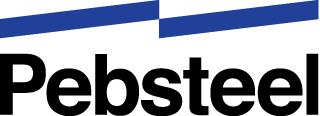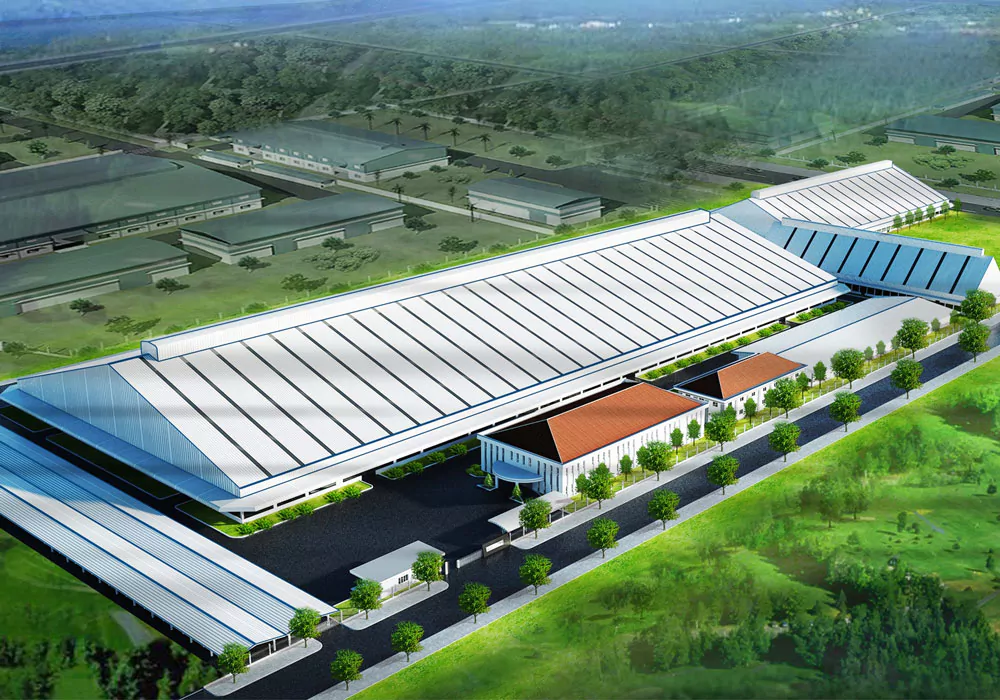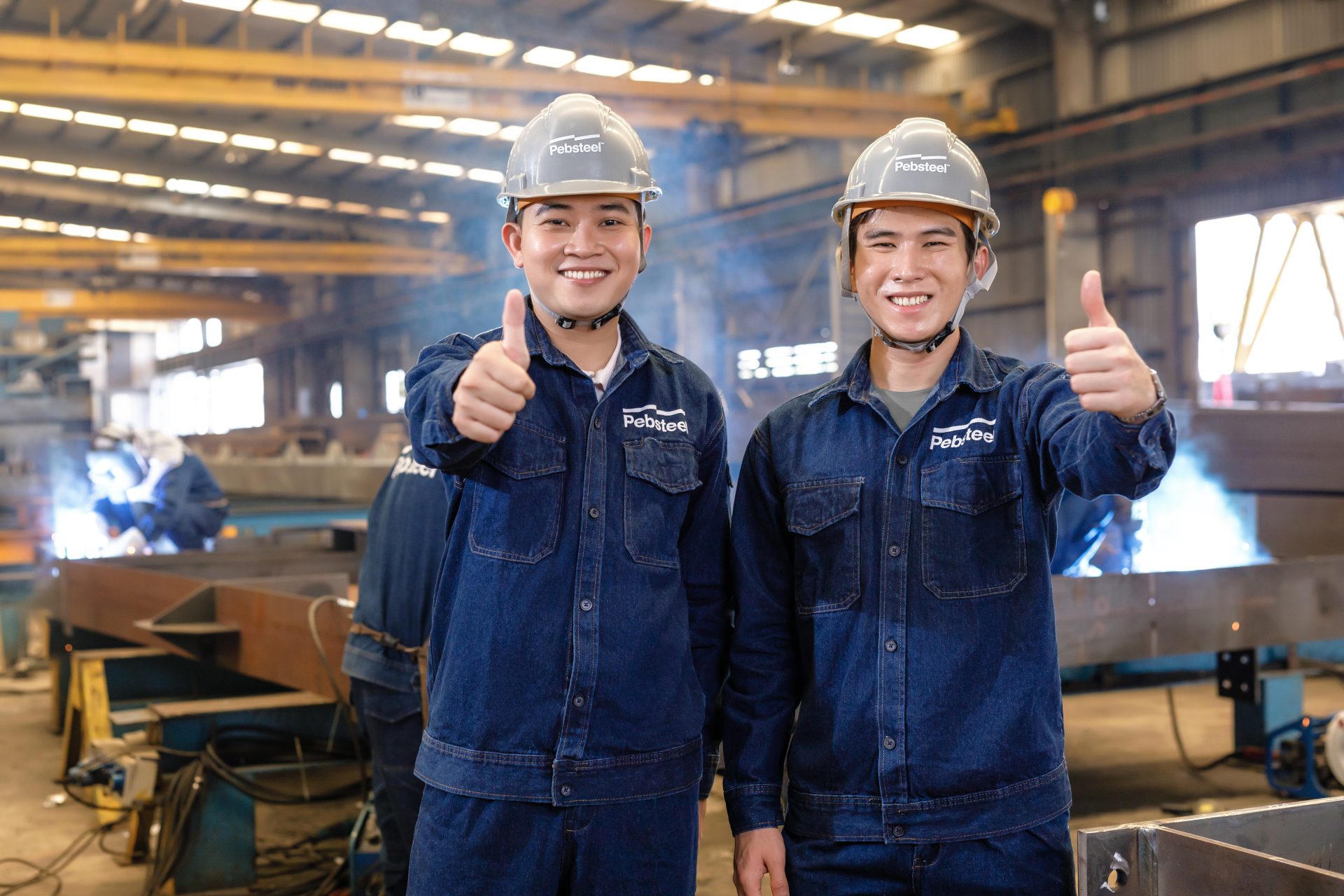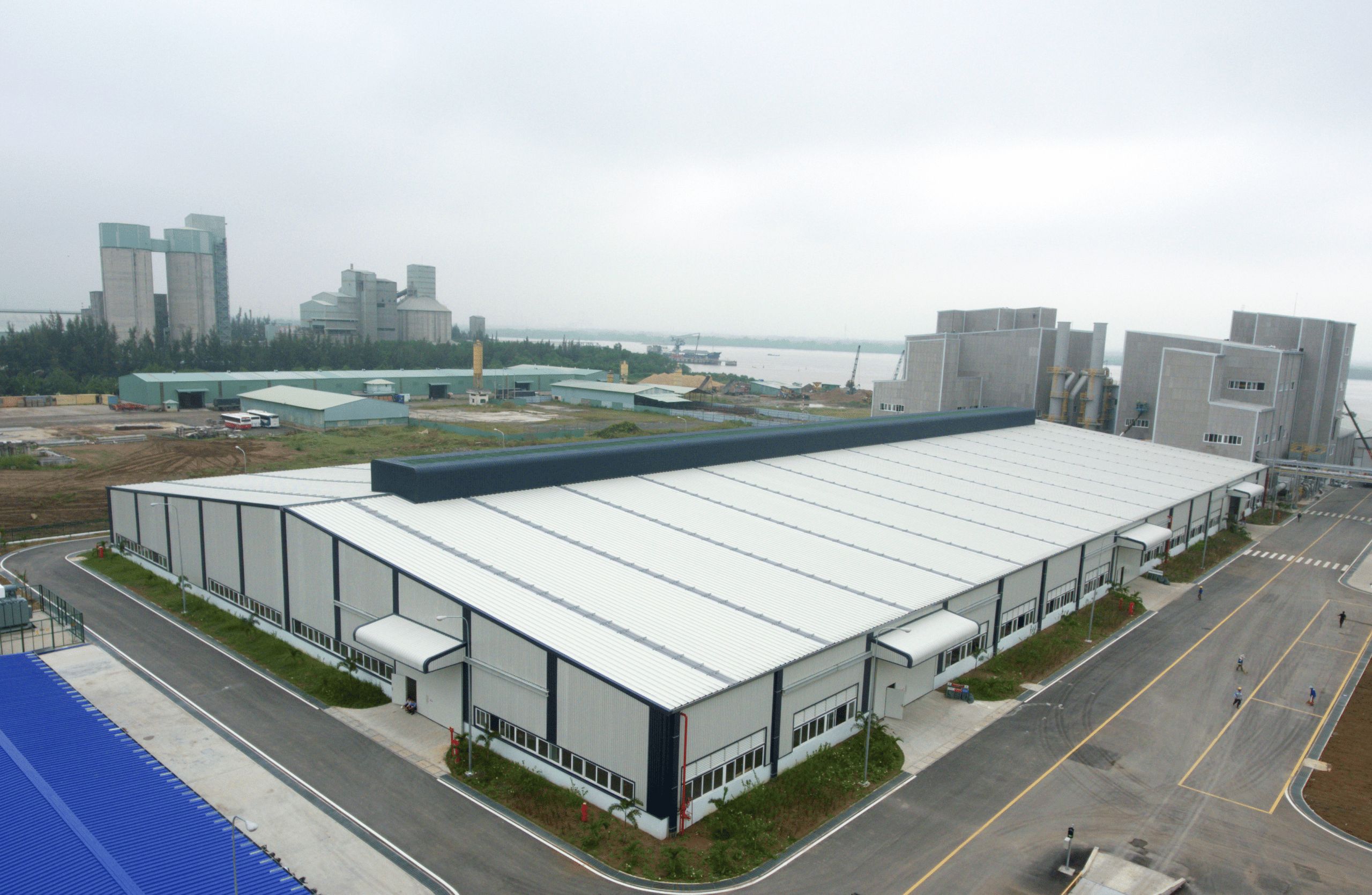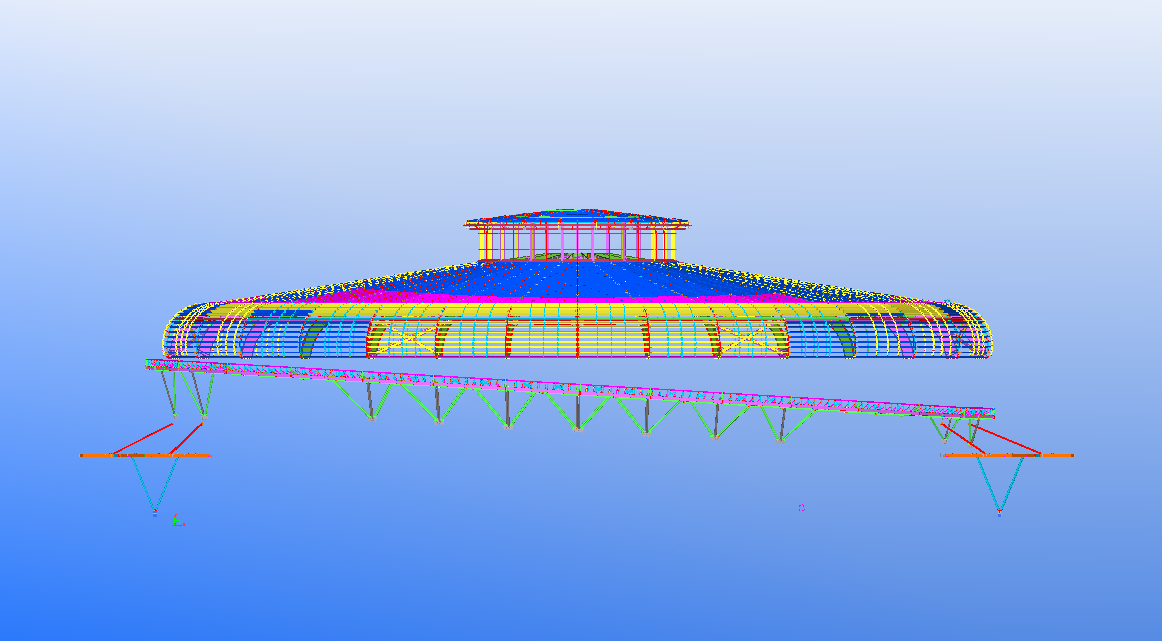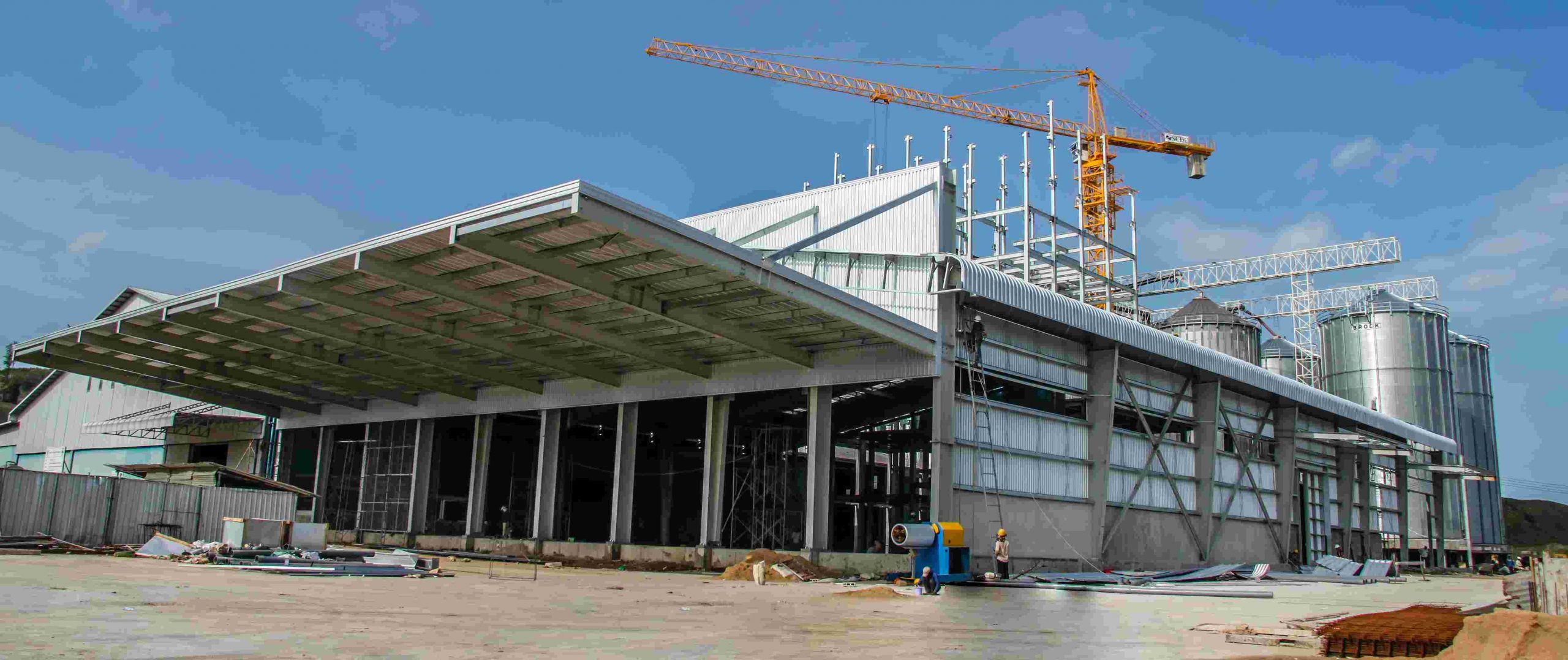The connection system plays an important role in ensuring the quality, durability, and safety of pre-engineered building. Choosing an appropriate connection system and executing it accurately contributes to a high-quality pre-engineered steel building that meets the needs of the investors. This article will provide detailed information about the connection system in pre-engineered steel building construction, including common types of connections, advantages and disadvantages, applications, usage considerations, and maintenance procedures.
1. What is the connection system in pre-engineered steel buildings?
A collection of techniques used to join steel components together, creating a single, sturdy structure is known as the connection system in prefabricated steel buildings. These connections are essential for ensuring the project’s stability, longevity, and load-bearing capacity.
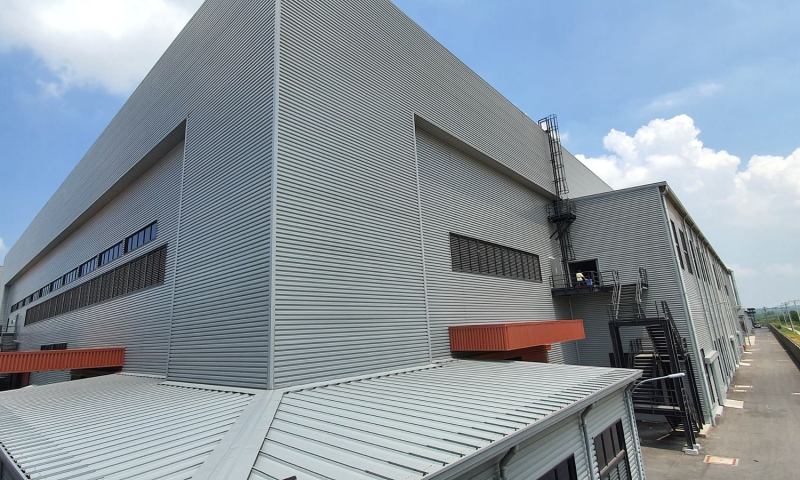
What is the connection system in pre-engineered steel buildings
2. Benefits of connection systems in pre-engineered buildings
2.1. Ensure consistency and solidity of the structure
Connections help connect steel structures, forming a unified and solid structure, allowing the building to withstand large loads and resist external forces such as wind, storms, earthquakes, etc.
2.2. Increase the durability of the structure
The connection system is designed to have high load-bearing capacity and resist corrosion so that pre-engineered steel buildings can have a long lifespan.
2.3. Save time and construction costs
Compared to traditional construction methods, using connection systems in pre-engineered steel buildings saves time and costs. The construction of pre-engineered steel buildings does not depend on weather conditions, so they can be constructed all year round without affecting the progress of the project. This efficiency in installation and cost optimization further highlights the top benefits of steel structure building, especially for large-scale and fast-track construction projects.
2.4. Increase scalability and aesthetics
Connection systems allow easy expansion of the area or structural changes in the future without having to completely dismantle it.
Also, they can be designed in various styles and colors, contributing to enhancing the building’s aesthetics.
2.5. Increase fire resistance
Some types of connecting systems are specifically designed to provide good fire resistance. Choosing the appropriate connection system and fire protection measures will contribute to ensuring the safety of people and property in pre-engineered steel buildings.
2.6. Increase soundproofing and vibration resistance
Connection systems can be combined with soundproofing materials to create a quiet and comfortable space. They also can be designed to minimize vibrations transmitted through the structure, ensuring comfort and safety for users.
2.7. Increase natural light and air circulation
The interconnected system can be designed to maximize natural light, save energy, and create a bright and airy working environment.
The interconnected system can be designed to facilitate good air circulation in the building, helping to improve air quality and create comfort for users.
2.8. Easy installation of electricity, water, and ventilation systems
Installation of various technical systems, such as ventilation, water, and electricity, is made simple by the interconnected system without compromising the building’s structural integrity.
For pre-engineered steel buildings, the connecting system plays a major role in ensuring the quality, durability, aesthetics, and efficiency. By choosing the appropriate connectivity system, investors and consumers will get many benefits.
3. Common connection systems in the construction of pre-engineered buildings
| Type | Advantages | Disadvantages |
|---|---|---|
| Welding connection system | High durability, high safety, high aesthetics, resistance to harsh environmental conditions | Requires highly skilled welders, high construction costs, difficult to repair or disassemble |
| Screwed connection system | Easy installation, high flexibility, low construction costs, easy to repair or disassemble | Lower load-bearing capacity than welded connections, less aesthetics |
| Shear connection system | High shear force resistance, easy construction | Low tensile and moment resistance, low aesthetics |
| Moment linkage system | High moment capacity, high aesthetics | Low tensile and shear resistance, high technical requirements |
3.1. Welded connection system in prefabricated steel buildings
Pre-engineered steel building construction relies heavily on the welded connection mechanism, which forges a sturdy and permanent bond between steel components. During the welding process, the steel structure’s cross-sections are joined together by melting the metal at the connection point to a high temperature and then allowing it to cool. The weld will solidify into a unified metal block with excellent load-bearing capacity and high durability after cooling.
Advantages
The high load-bearing capacity requirements for steel buildings are satisfied by welded connections, which offer exceptional safety and excellent durability. The welded joint’s monolithic construction allows it to withstand torsional and bending forces with great effectiveness, guaranteeing structural stability and safety.
The welded joints, upon completion, have a smooth and flat surface, which enhances the overall aesthetic appeal of the construction. Welded connections also have the ability to withstand harsh environmental conditions, such as high humidity, rapid temperature changes, and exposure to chemicals.
Applications
- Connecting beams and columns: Welding is commonly used to connect beams and columns, forming the main frame of pre-engineered steel buildings.
- Connecting purlins and tie bars: Welded joints are used to connect purlins and tie bars, ensuring the stability and load-bearing for the roof structure.
- Connecting panels: Welded connections are used to connect color-coated steel panels or insulated panels to the steel frames.
- Connecting steel accessories: Welded joints are used to join steel accessories such as struts, purlin hooks, brackets, etc.
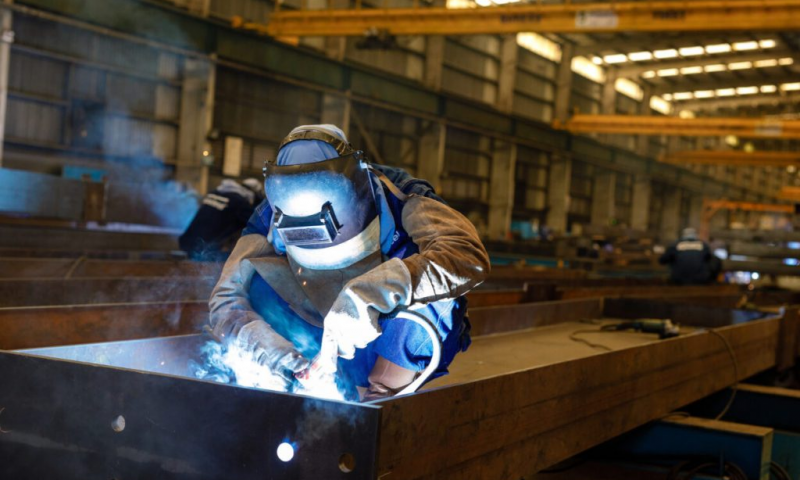
Welding is a commonly used method in the production of steel structures
3.2. Bolted connection system in prefabricated steel buildings
Bolted connection systems play a prevalent role in the construction of prefabricated steel buildings due to their ease of installation and high degree of flexibility.
Bolted connections put bolts into available holes on the components to be joined, using high-strength bolts to connect steel structures. Subsequently, nuts are tightened using a wrench or a specialized bolt-tightening machine to ensure a secure and safe connection.
Advantages
The installation of screw connections is a fast and easy process that does not require sophisticated building methods. Bolted connections offer flexibility in construction and repair, as they can be easily disassembled or structurally altered when necessary.
Bolted connections have the ability to withstand high load-bearing requirements, meeting the durability and safety needs of a wide range of construction projects. Compared to other types of connections, such as welding, bolted connections offer lower construction costs, which helps investors save on expenses.
Types of bolts commonly used in screw connections
- Hexagonal bolt: The most common type of bolt, widely used in steel structures.
- High-strength bolts: These bolts are used for structures subjected to heavy loads.
- Self-drilling bolt: A type of bolt that can self-thread when screwed into a hole, eliminating the need for pre-drilling.
- Foundation anchor bolts: Specialized bolts are used to connect steel frames with house foundations.
3.3. The moment connection system in prefabricated steel buildings
The moment connection system plays an important role in the structures of prefabricated steel buildings, responsible for transmitting bending moments between steel components to help the structure withstand both vertical loads and moment loads.
Thanks to its outstanding advantages of rigidity and high load-bearing capacity, moment connections are widely used in cases requiring rigid connections to minimize rotational movements between components.
Characteristics
Moment connections are capable of withstanding both bending and torsional forces, ensuring structural safety under the impact of complex loads. Thanks to its special structure, moment connections provide high rigidity and solidity to the structure, minimizing displacement and deformation caused by loads.
Applications
- Structures requiring rigid connections: When it is necessary to minimize rotation between components, moment connections are the optimal choice.
- Structures subjected to heavy loads: In cases of complex loads, especially large bending moments, moment connections ensure the safety and durability of the structure.
- Structures requiring high aesthetics: Thanks to high aesthetics, moment connections are applied in projects that require strict visual standards.
Common types of moment connections
- Fully restrained connections: These connections completely restrict rotational movements between components, providing maximum rigidity and solidity to the structure.
- Partially restrained connections: These connections allow for slight rotational movements between components, suitable for cases requiring more flexibility while maintaining high load-bearing capacity.
3.4. The shear connection system in pre-engineered building
The shear connection system plays a crucial role in ensuring the structural integrity of prefabricated steel buildings by transmitting lateral shear forces between steel members.
Thanks to their ability to resist the shear forces acting on the structure, shear connections help ensure the safety and structural integrity of the construction project, especially under lateral forces such as wind or seismic loads.
Characteristic
Shear connections are designed to withstand significant shear forces, effectively distributing loads from highly stressed areas to other parts of the structure. Compared to other connection types, shear connections typically feature simpler designs are easier to fabricate, thereby saving time and construction costs.
Shear connections also offer flexibility in design and construction for a wide variety of steel structure types.
Applications
- Structures subjected to large horizontal loads: In cases of large horizontal loads such as wind forces or seismic forces, shear connections play an important role in transmitting forces and ensuring structural safety.
- Structures requiring high aesthetics: Thanks to high aesthetics, shear connections are applied in projects that require strict visual standards.
- Structures need to be cost-effective: Due to ease of construction and affordability, shear connections are an economical choice for large-scale projects or those with limited budgets.
Common types of shear connections
- Connection by piles: Steel piles are used to penetrate steel structures that need to be connected and welded in place.
- Connection by beveling: Cut both ends of the steel structures that need to be connected and welded securely.
- Connection by shear bolts: Use special bolts that can withstand high shear forces.
- Connection by spacer plate: Use a steel plate between the two steel bars that need to be connected and welded in place.
4. The connection system improves fire resistance pre-engineered building construction.
In the construction of pre-engineered steel buildings, ensuring fire safety is extremely important. The connection system plays a key role in increasing the fire resistance of the building. Below are some commonly used connection systems to increase fire resistance for pre-engineered steel buildings:
4.1. Fireproof mortar bonding system
Fireproof mortar is used to cover the connections between steel structures, forming an insulating layer that protects the steel from high temperatures in the event of a fire. Besides, fireproof mortar can be divided into two main types: dry mortar fireproof mortar, and wet mortar fireproof mortar.
- Dry mortar fireproof mortar is often used in places with limited construction space or requiring quick construction.
- Wet mortar is often used in places with high requirements for fire resistance and adhesion.
4.2. Connection system with fireproof paint
Fireproof paint is applied to the surface of steel profiles, creating an insulating layer that protects the steel from high temperatures in the event of a fire. It can be divided into two main types: solvent-based fireproof paint and water-based fireproof paint.
- Solvent-based fireproof paint often has better flammability resistance but can be harmful to human health and the environment.
- Water-based fireproof paint is safer for human health and the environment, but its fire resistance may not be as good as solvent-based fireproof paint.
4.3. Connection system with fireproof panels
Fireproof panels are used to wrap around the connections between steel structures, creating an insulating layer that protects the steel from high temperatures in the event of a fire.
Fireproof panels can be made from various materials such as gypsum, mineral fibers, cellulose fiber cement, etc. Each type of material has its advantages and disadvantages, so it is necessary to choose the type of fireproof panels suitable to project requirements.
5. The connection system helps increase sound insulation and vibration resistance
The connection system helps increase soundproofing and vibration resistance for prefabricated steel buildings through two main mechanisms:
- Minimize sound transmission: The connections between steel structures are designed to minimize the transmission of sound waves through the structure, helping to prevent outside noise from penetrating inside the building. This is often evident in steel structure design.
- Absorb vibration energy: The connection system can absorb a portion of vibration energy from activities inside or outside the building, helping to minimize vibration and create a feeling of quiet and comfort for users.
5.1. Rubber connection system
Rubber has good soundproofing and anti-vibration properties, so rubber connections are often used in locations where noise and vibration need to be minimized.
Structure and operating principle
The rubber bonding system includes the following main components:
- Elastic rubber layer: The rubber layer is made from synthetic rubber material with high elasticity, good bearing capacity, and good aging resistance.
- Metal layer: The metal layer is used to connect the rubber layer with steel components. The metal layer can be made of steel, aluminum, or other materials.
- Adhesive layer: The adhesive layer is used to bond the rubber layer to the metal layer. The glue needs to have high adhesion and good bearing capacity.
Operating principle: When a force acts on a steel structure, the elastic rubber layer will be compressed, thereby absorbing part of the energy of the impact force. Thanks to this, the amount of vibration transmitted through the steel structure will be significantly reduced.
Application of rubber bonding system
- Connecting panels: Connecting color-coated steel panels or insulated panels to the steel frame.
- Connecting steel beams: Connect steel beams to form a steel house frame.
- Connecting steel columns: Connecting steel columns to form a support frame system.
- Connecting steel accessories: Connecting steel accessories such as purlins, tie bars, etc.
5.2. Bonded with mineral wool
Mineral wool is an effective soundproofing and anti-vibration material. This system uses layers of mineral wool to connect steel structures, instead of traditional connection methods such as welding or screwing.
- Mineral wool layer: The mineral wool layer is made from melted basalt, and has good sound insulation, heat insulation, and fire resistance.
- Metal layer: The metal layer is used to connect the mineral wool layer with steel structures. The metal layer can be made of steel, aluminum, or other materials.
- Glue layer: The glue layer is used to bond the mineral wool layer to the metal layer. The glue needs to have high adhesion and good bearing capacity.
Operating principle: When a force acts on the steel structure, the mineral wool layer will be compressed, thereby absorbing part of the energy of the impact force. Thanks to this, the amount of vibration transmitted through the steel structure will be significantly reduced. The mineral wool layer also helps effectively insulate sound and heat for the construction.
5.3. Bonded with soundproof foam
The soundproofing foam connection system includes the following main components:
- Soundproofing foam layer: The soundproofing foam layer is made from Polyolefin plastic material with good soundproofing, heat insulation, and waterproofing properties.
- Metal layer: The metal layer is used to connect the soundproof foam layer with steel structures. The metal layer can be made of steel, aluminum, or other materials.
- Adhesive layer: The adhesive layer is used to bond the acoustic insulation layer to the metal layer. The adhesive needs to have high adhesion and good load-bearing capacity.
Operating principle: When a force acts on the steel structure, the soundproofing foam layer will be compressed, thereby absorbing part of the energy of the impact force. Thanks to this, the amount of vibration transmitted through the steel structure will be significantly reduced. The soundproofing foam layer also helps effectively insulate sound and heat for the building.
5.4. Adhesive bonding system
During construction, the adhesive is mixed well and pumped onto the bond surface of the steel structures. Then, the steel structures are pressed tightly together and held in place for a certain period until the adhesive dries completely. The dried adhesive forms a solid bond between steel structures, with high load-bearing capacity and good water resistance. Main ingredients include:
- Adhesive: Two-component epoxy or polyurethane adhesives with high adhesion, good bearing capacity, and good water resistance.
- Bonding surface: The surface of steel structures needs to be clean, dry, and flat before applying glue.
- Primer layer: The primer layer is used to increase the adhesion between the adhesive and the steel surface.
- Construction tools: Adhesive gun, adhesive mixer, adhesive trowels, etc.
5.5. Connection system with damper bolts
The connection system with damper bolts is an effective solution to increase soundproofing and vibration resistance for prefabricated steel buildings. This system uses special bolts designed to absorb vibration energy, helping to minimize the transmission of vibration through the steel structure.
Structure and operating principle
Damping bolts consist of two main parts: a steel core and a rubber cover. The steel core is responsible for bearing the main force, while the rubber cover absorbs vibration energy. Rubber covers are usually made from highly elastic materials such as EPDM and Neoprene, etc.
When vibration impacts the steel structure, the vibration energy is transmitted to the damping bolts. The rubber cover of the bolt will be compressed, thereby absorbing part of the vibration energy and converting it into heat energy. Thanks to this, the amount of vibration transmitted through the steel structure will be significantly reduced.
Application of connection system with damper bolts
- Manufacturing factory: Helps reduce noise from machinery and equipment, creating a safe and effective working environment for workers.
- Warehouse: Helps protect goods from the impact of vibration, limiting damage during storage and transportation.
- Gymnasiums and theaters: Helps create a good sound, limiting outside noise that affects sound quality.
- Office, home: Helps create a quiet, comfortable working and living environment.

Bolt connections are made by connecting two parts
Understanding the connection system in the construction of pre-engineered steel buildings will help you choose the appropriate type of connection, ensuring the safety and efficiency of the construction. To ensure that the connection system works as efficiently as possible and gives you and the building’s users peace of mind, always adhere to scheduled maintenance inspections.
For comprehensive solutions in prefabricated steel building construction, please contact Pebsteel via email at marketing@pebsteel.com.vn or hotline at (+84) 908 883 531 for immediate assistance!
*** This article is intended to provide general information about the pre-engineered steel building and steel structure industry only. For further details or clarification based on your needs, please contact Pebsteel directly.
